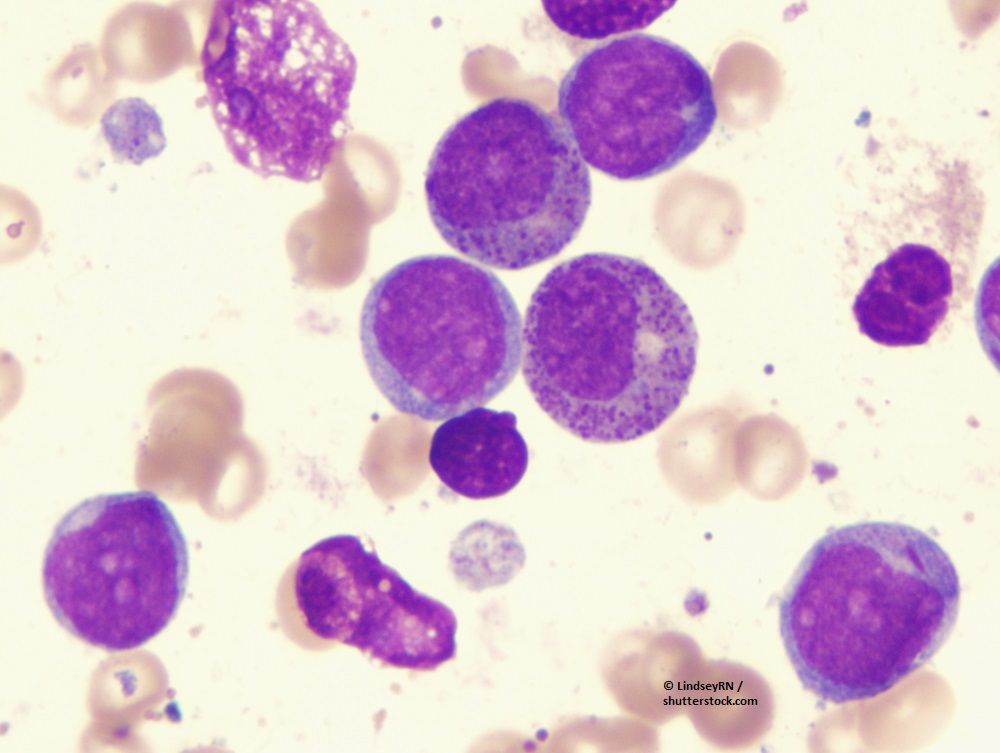FDA Grants Fast Track Designation to Tamibarotene in Newly Diagnosed AML
Findings from SELECT-AML-1 support the potential benefit of tamibarotene in those with acute myeloid leukemia harboring RARA gene overexpression.
Tamibarotene received fast track designation from the FDA in higher-risk myelodysplastic syndrome in January 2023.

The FDA has granted fast track designation to tamibarotene as a treatment for patients 75 years and older with newly diagnosed acute myeloid leukemia (AML) harboring RARA overexpression as detected with an FDA-approved test, according to a press release from Syros Pharmaceuticals, the developer of the agent.1
Investigators are currently assessing treatment with tamibarotene plus venetoclax (Venclexta) and azacitidine in the aforementioned population as part of the ongoing phase 2 SELECT-AML-1 trial (NCT04905407). In previously published data, the triplet produced a complete response (CR) or CR with incomplete hematologic recovery (CRi) rate of 100% (n = 9/9) compared with 70% (n = 7/10) in patients who received venetoclax/azacitidine only.2 Specifically, the tamibarotene-based combination yielded CRs in 78% (n = 7/9) and a CRi rate of 22% (n = 2/9). In the control arm, 30% (n = 3/10) achieved a CR, and a CRi was highlighted in 40% (n = 4/10).
The median time to CR/CRi was 21 days (range, 14-28) in the triplet arm and 25 days (range, 17-56) in the control arm. Additionally, 100% of patients who received the tamibarotene-based regimen had a CR/CRi by the end of the first treatment cycle compared with 60% of those in the control arm.
Adding tamibarotene, which is an oral first-in-class selective retinoic acid receptor alpha agonist, to venetoclax and azacitidine in this population was generally well tolerated, and investigators observed no new safety signals. Most non-hematologic adverse effects (AEs) were low-grade and reversible, and the incidence of serious AEs was similar across both study arms.
“I am highly encouraged by the initial data from the randomized portion of SELECT-AML-1,” Thomas Cluzeau, MD, PhD, head of Hematology at Nice University Hospital, Côte d’Azur University in France, said in a press release on these findings.2 “Despite the recent advances in treatment for [patients who are] unfit [and have] AML, there remains a substantial need for options that offer higher response rates and improved overall survival, particularly for the one-third of patients who do not respond to existing standard-of-care. I believe tamibarotene may offer a significant therapeutic advance for the treatment of AML and I am eager to continue enrolling patients in the ongoing SELECT-AML-1 trial.”
Investigators of the SELECT-AML-1 trial are randomly assigning approximately 80 patients 1:1 to receive tamibarotene plus venetoclax and azacitidine or venetoclax plus azacitidine alone. Patients in the control arm who do not achieve a response to venetoclax/azacitidine are eligible to receive the tamibarotene-based combination as salvage therapy.
The trial’s primary end point is the CR/CRi rate. Secondary end points include duration of CR/CRi, time to CR/CRi, and overall response rate.3
Patients 75 years and older with newly diagnosed, previously untreated AML with a bone marrow or peripheral blood blast count of at least 20% are eligible for enrollment on the trial. Those who are younger than 75 years are eligible if they have an ECOG performance status of 3, cardiac history of congestive heart failure, or any other comorbidity determined to be incompatible with receipt of intensive chemotherapy.
“We are pleased to receive fast track designation for tamibarotene for the treatment of AML. This designation reflects the tremendous need for a safe and effective therapy, which can improve the clinical outcomes and prognosis among people diagnosed with AML, many of whom cannot tolerate intensive treatment,” David A. Roth, MD, chief medical officer at Syros Pharmaceuticals, said.1 “We look forward to sharing additional data from SELECT-AML-1 later this year, and to potentially accelerate the delivery of tamibarotene as a new frontline option for the approximately 30% of [patients with] AML who are positive for RARA overexpression.”
Tamibarotene received fast track designation from the FDA in higher-risk myelodysplastic syndrome in January 2023.4
References
- Syros receives fast track designation from the FDA for tamibarotene for the treatment of newly diagnosed unfit AML with RARA gene overexpression. News release. Syros Pharmaceuticals. April 9, 2024. Accessed April 10, 2024. https://tinyurl.com/3pkp65h8
- Syros announces encouraging initial data from randomized SELECT-AML-1 phase 2 clinical trial evaluating tamibarotene in combination with venetoclax and azacitidine. News release. Syros Pharmaceuticals. December 6, 2023. Accessed April 10, 2024. https://tinyurl.com/2tjtdd5n
- Tamibarotene plus venetoclax/azacitidine in participants with newly diagnosed AML. ClinicalTrials.gov. Accessed April 10, 2024. https://tinyurl.com/5fb46e2k
- Syros receives fast track designation from the FDA for tamibarotene for the treatment of higher-risk myelodysplastic syndrome. News release. Syros Pharmaceuticals. January 26, 2023. Accessed April 10, 2024. https://tinyurl.com/yc7b53t5
Newsletter
Stay up to date on recent advances in the multidisciplinary approach to cancer.